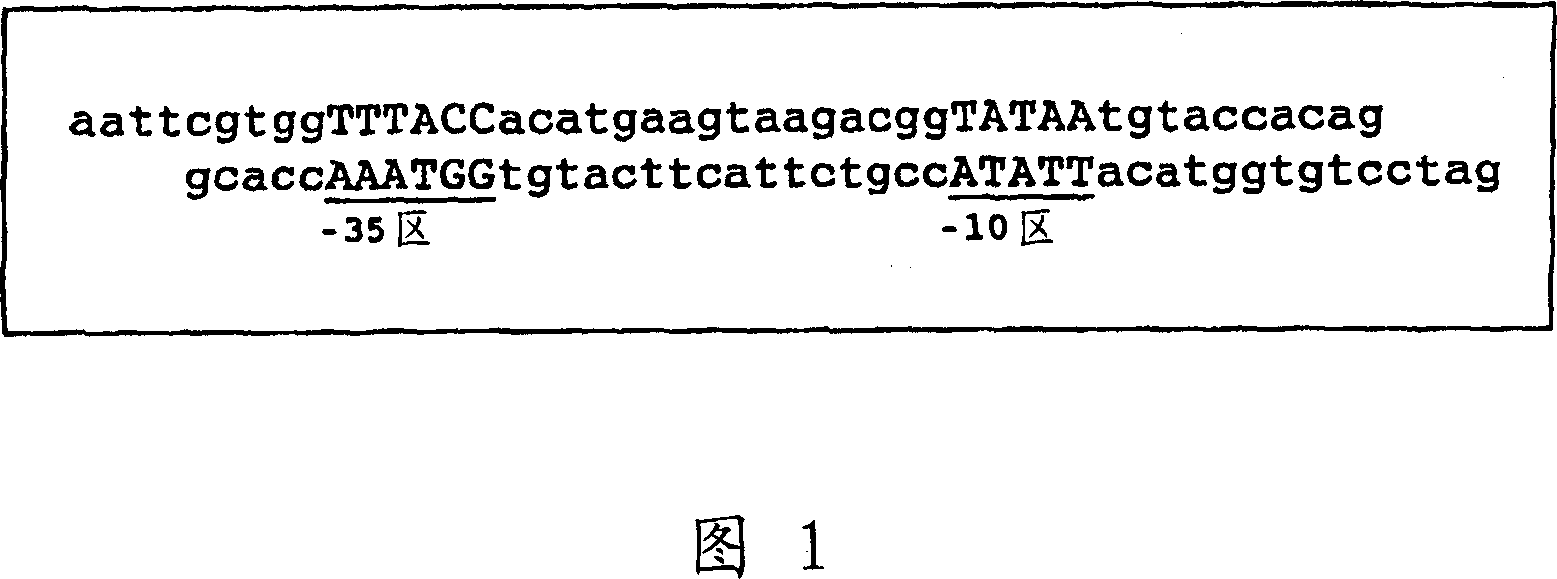Method for producing L-threonine using bacteria belonging to the genus escherichia
A kind of Escherichia, threonine technology, applied in biological field
- Summary
- Abstract
- Description
- Claims
- Application Information
AI Technical Summary
Problems solved by technology
Method used
Image
Examples
Embodiment 1
[0104] Example 1: Cloning of the glk gene from Escherichia coli, and the effect of enhanced expression of the glk gene on the production of L-threonine.
[0105] The glk gene was obtained by PCR using chromosomal DNA of Escherichia coli strain MG 1655 (VKPM B-6195) as a template and primers P1 (SEQ ID NO: 17) and P2 (SEQ ID NO: 18). Strain MG1655 is available from the American Type Culture Collection (ATCC700926). Primer P1 contains a recognition site for BamHI restriction enzyme introduced into its 5'-end. Primer P2 contains a recognition site for the SacI restriction enzyme introduced into its 5'-end. The resulting DNA fragment (968bp) containing the glk gene was treated with BamHI and SacI restriction enzymes and cloned into plasmid pMW119, which was previously modified to use the promoter P of lambda phage R replace promoter P lac , and then treated with the same restriction enzymes. Thus constructed in the promoter P R Plasmid pMW-P containing the glk gene under cont...
Embodiment 2
[0124] Example 2: Cloning of pfkA gene from Escherichia coli, and the effect of enhanced expression of pfkA gene on L-threonine production.
[0125] The pfkA gene was obtained by PCR using chromosomal DNA of E. coli strain MG 1655 (VKPM B-6195) as a template and primers P3 (SEQ ID NO: 19) and P4 (SEQ ID NO: 20). Primer P3 contains a recognition site for BamHI restriction enzyme introduced into its 5'-end. Primer P4 contains a recognition site for SacI restriction enzyme introduced into its 5'-end. The resulting DNA fragment (987 bp) containing the pfkA gene was cloned directly into vector pCR 2.1 (Invitrogen) by ligation overnight at +4°C. Then the BamHI-SacI DNA fragment containing the pfkA gene was cloned again into the plasmid pMW119, which was previously modified to use the promoter P of lambda phage R replace promoter P lac , and then treated with BamHI and SacI restriction enzymes. Thus constructed in the promoter P R Plasmid pMW-P containing the pfkA gene under con...
Embodiment 3
[0146] Example 3: Cloning of the fbaA gene from Escherichia coli, and the effect of enhanced expression of the fbaA gene on the production of L-threonine.
[0147] The fbaA gene was obtained by PCR using chromosomal DNA of Escherichia coli strain MG 1655 (VKPM B-6195) as a template and primers P5 (SEQ ID NO: 21 ) and P6 (SEQ ID NO: 22). Primer P5 contains a recognition site for BamHI restriction enzyme introduced into its 5'-end. Primer P6 contains a recognition site for the SacI restriction enzyme introduced into its 5'-end. The resulting DNA fragment (1155bp) containing the fbaA gene was treated with BamHI and SacI restriction enzymes and cloned into plasmid pMW119, which was previously modified to use the promoter P of lambda phage R replace promoter P lac , and then treated with the same restriction enzymes. Thus constructed in the promoter P R Plasmid pMW-P containing the fbaA gene under control R -fbaA. Unregulated, high-level expression of the fbaA gene can be ach...
PUM
 Login to View More
Login to View More Abstract
Description
Claims
Application Information
 Login to View More
Login to View More - R&D
- Intellectual Property
- Life Sciences
- Materials
- Tech Scout
- Unparalleled Data Quality
- Higher Quality Content
- 60% Fewer Hallucinations
Browse by: Latest US Patents, China's latest patents, Technical Efficacy Thesaurus, Application Domain, Technology Topic, Popular Technical Reports.
© 2025 PatSnap. All rights reserved.Legal|Privacy policy|Modern Slavery Act Transparency Statement|Sitemap|About US| Contact US: help@patsnap.com

